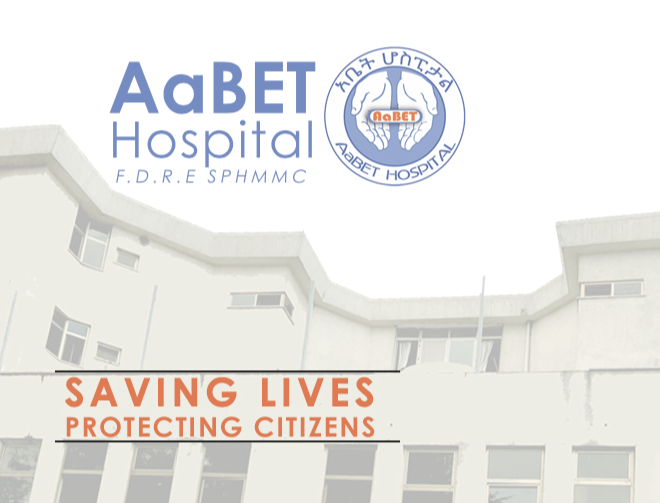
Posted by Felasfa Wodajo, MD
March 4, 2019
During my recent trip to Ethiopia, I had the opportunity to visit AaBET hospital, affiliated with St. Paul University in Addis Ababa. AaBET is an acronym which stands for “Addis Ababa Burns, Emergency, and Trauma,” which is a helpful description, and also an enormous understatement.
AaBET is the main trauma hospital in the city. It is overflowing with orthopedic injuries, which account for 70% of the hospital’s patients. and Dr. Mamo Deksisa, my guide for the day. Like many surgeons in Ethiopia, Dr. Mamo is very young, very capable, and entrusted with an amazing array of responsibilities.
My first stop was a morning conference, where I gave an hour-long lecture on bone and soft tissue tumors. Afterward, Dr. Mamo and I sat down with the man in charge of this merciful mission, Dr. _______ Wegagen, Chief of Orthopedics. We discussed the needs of the department, and the possible ways we might work together in the future. It gave me food for thought as Dr. Mamo and I resumed our tour of the facilities.
At the moment, St. Paul’s main campus is undergoing construction. Large buildings are shooting out of the ground for cardiology, gastroenterology, women’s health, and oncology wings. It’s exciting to imagine St. Paul’s bigger, better future.
We toured the undergraduate medical school buildings. For Dr. Mamo, this was a visit to his alma mater, and he knew exactly where to go for an excellent injera lunch.
Later we caught up with Dr. Rick Hodes, an American pediatrician who has worked in Ethiopia for many years. His practice, funded by American donations, is rather unique. Initially, he concentrated on pediatric cancers, which he treated with chemotherapy. Today, however, he is almost exclusively dedicated to pediatric spinal deformities. He gave a quick slide presentation on some of the dramatic spinal deformities he has been able to treat. His work is fascinating, and anyone who would like to know more should visit his website. Dr. Hodes is doing incredible things for the people of Ethiopia.
Dr. Mamo and I continued our visit at TAPPCO, another epically long acronym, this one standing for the Tesfa Addis Parents Childhood Cancer Organization, an NGO dedicated to supporting the families of children undergoing chemotherapy. Family support is absolutely vital but is sometimes overlooked by medical professionals or donors. Because TAPPCO pays for their meals and lodging, families who live far away from Addis are able to stay in the city and care for their children. The results can’t be measured in a laboratory, but are certainly life-saving. Two partner organizations are involved in providing this service – the Mother Theresa Foundation provides meals and housing, while the Aslan Project supports staffing needs and pays for outpatient medications.
Before we could leave, Ethiopian hospitality intervened. We were invited for an afternoon coffee ceremony. Parents of patients gathered together and passed around popcorn and coffee. My family supports TAPPCO and Sara Ibrahim, the director of the organization, made this known to the gathering. I would have preferred to remain anonymous, but the parents each stood and made long speeches expressing their gratitude.
We were persuaded to take any even closer at TAPPCO by visiting the Mother Theresa compound in Sidist Kilo, where patients stay for free.
There are three general practitioners at the compound. One of the staff members gave us a tour of the impressive compound. The wards were spartan but clean. Patients who were not confined to their beds were outside playing cards or chatting.
We were introduced to two female patients, both of whom had bone tumors. Like many patients, they were not presented to hospital doctors until very late. One of the girls, just 18 years old, had a massively enlarged knee and is now unable to walk on it. She recently had an open biopsy at Tikur Anbessa, however, it may take a month for the lab results to be processed. In the meantime, she will stay at Mother Theresa. If it is confirmed osteosarcoma, surgeons will be forced to amputate, and she will likely have to undergo chemotherapy, which, due to limited availability, may take an additional month to schedule. Regardless, she is grateful to have somewhere to stay.
The second girl, 14 years old, had undergone a very high transfemoral amputation just a few weeks before we arrived. When we met her, she was holding a bedpost attempting to stand. She was stoic, despite her grim prognosis. She has no hamstring or adductor attachments, which resulted in a nearly fixed 90-degree flexion contracture of her short residual limb. Even if this was fixed with an iliopsoas tenotomy, she would remain unlikely to be a good candidate for prosthetic fitting. If she survives, she will likely become independent with crutches and one leg.
Like any hospital, there are many difficult situations to be found in St. Paul’s. But there are also very capable doctors, such as my excellent guide Dr. Mamo, and compassionate organizations, such as TAPPCO, working to heal patients. If you have the opportunity, I would prescribe a trip to see this good work for yourself.


Leave a Reply